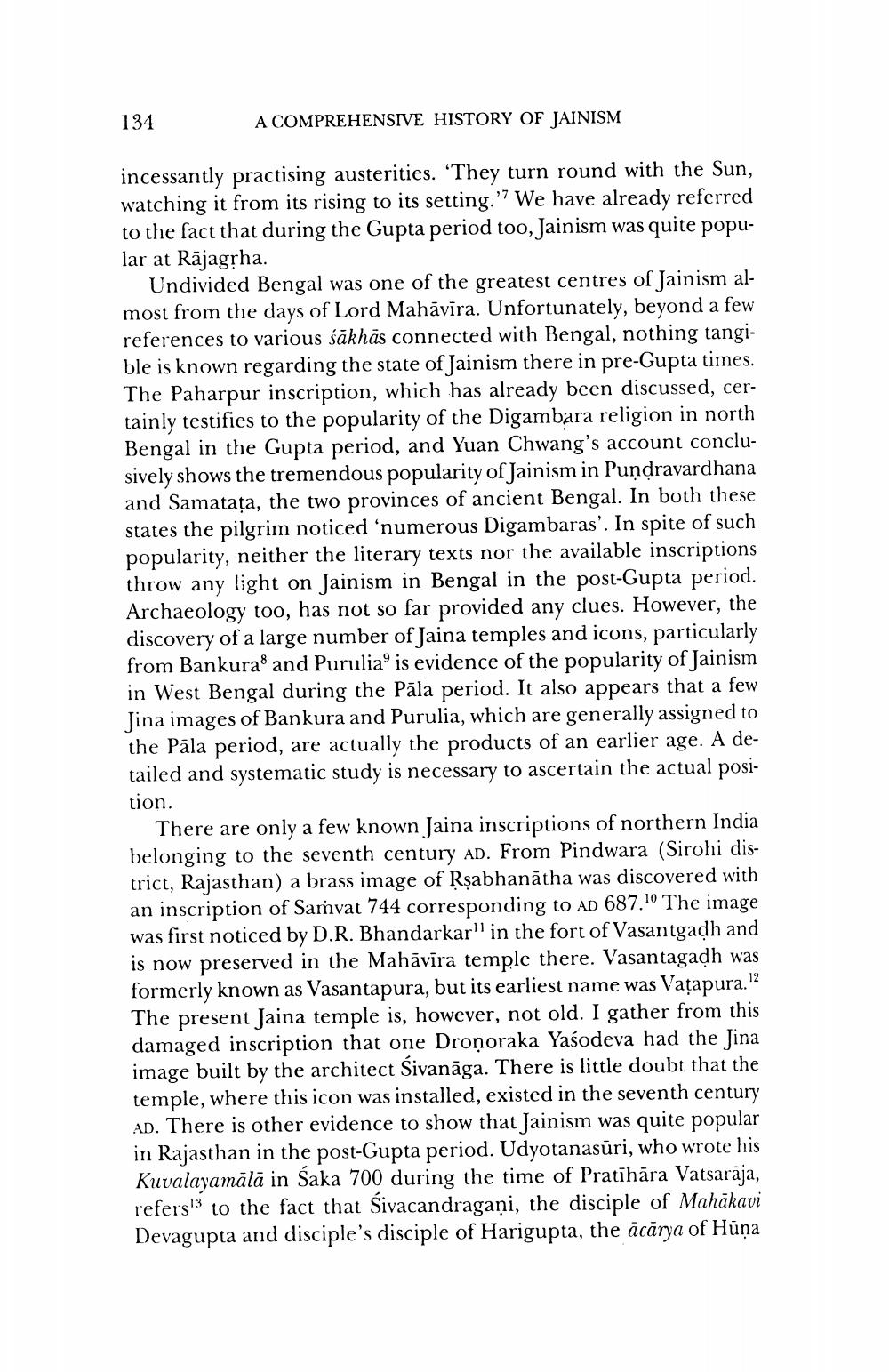________________
134
A COMPREHENSIVE HISTORY OF JAINISM
incessantly practising austerities. 'They turn round with the Sun, watching it from its rising to its setting. We have already referred to the fact that during the Gupta period too, Jainism was quite popular at Rajagrha.
Undivided Bengal was one of the greatest centres of Jainism almost from the days of Lord Mahāvira. Unfortunately, beyond a few references to various sākhās connected with Bengal, nothing tangible is known regarding the state of Jainism there in pre-Gupta times. The Paharpur inscription, which has already been discussed, cer tainly testifies to the popularity of the Digambara religion in north Bengal in the Gupta period, and Yuan Chwang's account conclusively shows the tremendous popularity of Jainism in Pundravardhana and Samataţa, the two provinces of ancient Bengal. In both these states the pilgrim noticed numerous Digambaras'. In spite of such popularity, neither the literary texts nor the available inscriptions throw any light on Jainism in Bengal in the post-Gupta period. Archaeology too, has not so far provided any clues. However, the discovery of a large number of Jaina temples and icons, particularly from Bankuraộ and Puruliao is evidence of the popularity of Jainism in West Bengal during the Pāla period. It also appears that a few Jina images of Bankura and Purulia, which are generally assigned to the Pāla period, are actually the products of an earlier age. A detailed and systematic study is necessary to ascertain the actual position.
There are only a few known Jaina inscriptions of northern India belonging to the seventh century AD. From Pindwara (Sirohi district, Rajasthan) a brass image of Rşabhanātha was discovered with an inscription of Samvat 744 corresponding to AD 687.10 The image was first noticed by D.R. Bhandarkar" in the fort of Vasantgadh and is now preserved in the Mahāvīra temple there. Vasantagadh was formerly known as Vasantapura, but its earliest name was Vațapura. 2 The present Jaina temple is, however, not old. I gather from this damaged inscription that one Dronoraka Yaśodeva had the Jina image built by the architect Sivanāga. There is little doubt that the temple, where this icon was installed, existed in the seventh century Ad. There is other evidence to show that Jainism was quite popular in Rajasthan in the post-Gupta period. Udyotanasūri, who wrote his Kuvalayamālā in Saka 700 during the time of Pratihāra Vatsarāja, refers to the fact that Sivacandragani, the disciple of Mahākavi Devagupta and disciple's disciple of Harigupta, the ācārya of Hūņa




